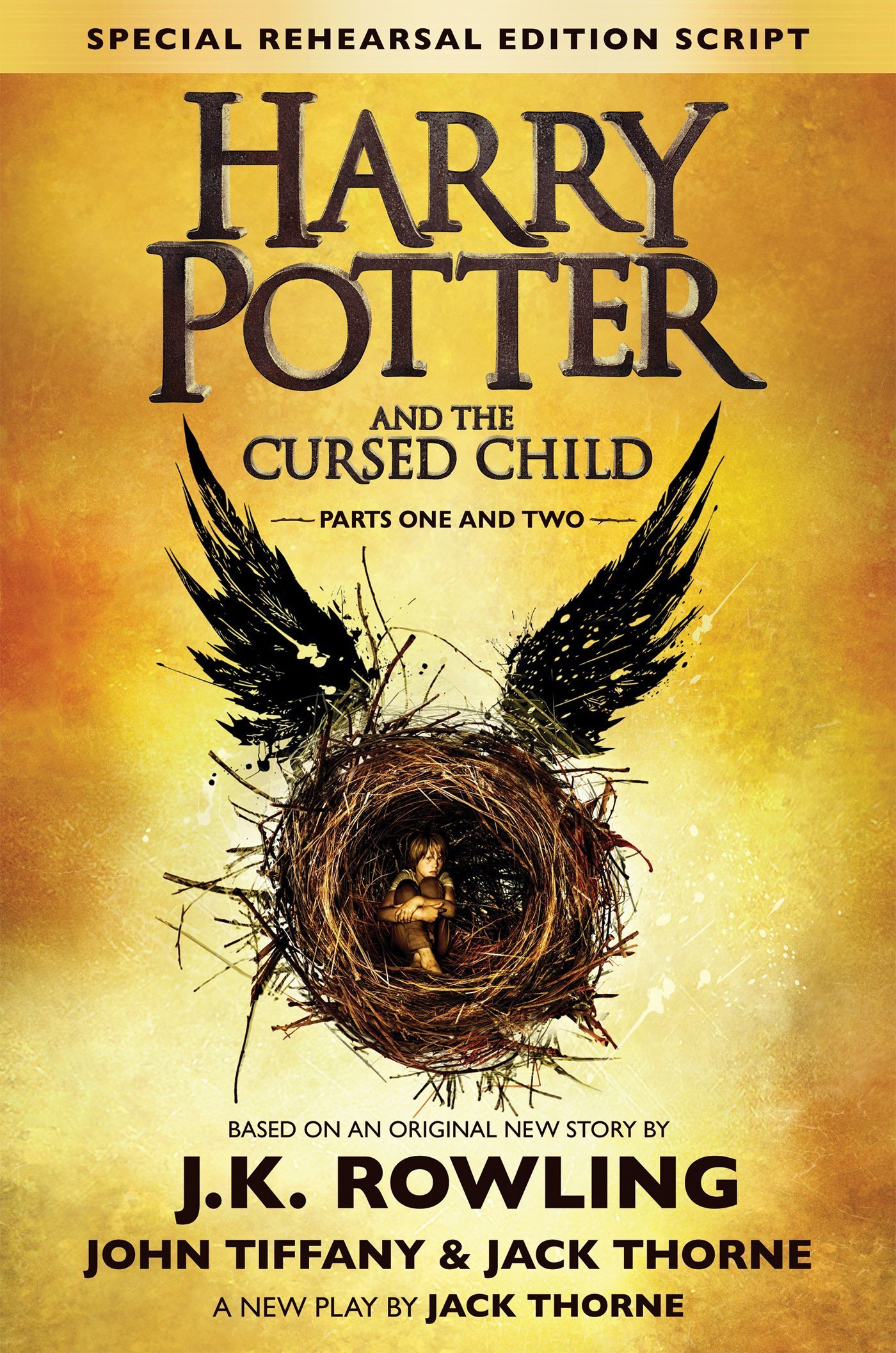Review| The Cursed Child by JK Rowling, Jack Thorne & John Tiffany
“The eighth story. Nineteen years later.” reads the back cover of the play script, in lieu of a more detailed blurb. Nor are there endorsing quotations from other acclaimed authors and playwrights. Such is the hype surrounding the release of The Cursed Child, that any more supporting statements are apparently superfluous.
It has been almost a decade since the publication of The Deathly Hallows and Rowling has wisely asserted (did I hear someone say prequels?) there will be no further novels. Yet, for those first drawn to the books as children, the narrative universe has extended into early adulthood in a number of ways. The film series coming to a close in 2011, the establishment of the supplementary Pottermore website, the construction of a colossal theme park, and various charity publications have provided fixes for those missing the original series, and have made it hard for others to forget. The characters and narrative universe have been so wholly assimilated into popular culture that the wizarding world has seemingly continued to exist in tandem with our own.
Maybe it’s time to grow up.
Either way, the resultant anticipation puts the new play in an awkward position. The simultaneous thirst for something novel, yet loyal to the original content; something which extends the reach of the magical world, but also satiates the nostalgic impulse mean there is a tricky line to toe.
Even as a text, The Cursed Child rises to the challenge. Based on a story written in collaboration with JK Rowling, the plot takes us in unexpected and refreshing directions. The somewhat divisive epilogue from The Deathly Halllows is incorporated into the opening acts, but from there events intertwine with those of The Goblet of Fire (emphasis on the fire, as my sister said in her glowing verbal review. Expect third degree burns, of the mind…) Twists and turns abound, and familiar characters are twisted into new and often jarring shapes.

At the play’s core is Harry’s intriguing relationship with younger son Albus Severus (…) As they play progresses, we see the two are not as different as they initially appear. Happily for some, certain less admirable aspects of Harry’s character have seemingly amplified themselves with age (Whereas Hermione is largely killing it). From act to act however, the Potters are forced to look outside themselves. Though some stars of the epilogue (most notably Teddy Lupin?!) are absent, new and established characters are put to the test in a plot which makes liberal, but deft, use of a certain time bending trinket from The Prisoner of Azkaban.
Those hoping for edge or ambiguity will not be entirely disappointed: we are shown that life outside the conventional Hogwarts set is often painfully isolating. Positive and negative traits do not necessarily pass from generation to generation. These traits are also not inherent as characters develop differently in alternative circumstances.
As much as the play moves in time, it also moves in space. Many of the stage directions point to a what could be a spectacular production. The play is co-written with director John Tiffany, and there seem to be a few set pieces already built in. The revelation that this is a “special rehearsal edition” is not just a sales ploy: the play could still be a work in progress, with potential tweaks in structure and shifts in tone throughout the sixteen month run. It is also exciting to think you are holding raw material, at least partially from the original source. With a play script, there is greater possibility of amateur adaptations and interaction with text, bridging the gap between fan generated content and the official canon. The multiple alternate outcomes on offer almost read as an invitation.
For all of its potential spectacle, novelty and troubling questions, The Cursed Child is not quite an event on the scale of a novel. Absent is the immersive detail and wide array of recurring characters; not an issue on stage, but challenging for those reading without a background in the original series. That said the emphasis on collective strength in the face of evil is strong (and relevant). After all, even the most heroic make mistakes.
There is a moment in the opening act where Harry is offered advice by a portrait of the late Albus Dumbledore. Professor McGonagall later points out that portraits are a memoir and not to be mistaken for the original subject. Relegating The Cursed Child to the status of portrait or memoir would be harsh, but the good old are days are not here again. The Harry, Hermione and Ron many of us followed or grew up with are not coming back.

